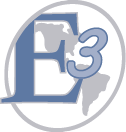 |
| Success requires focus |
Working as a software developer is a very creative pursuit. You take a few rough sketches on the back of a napkin, the nebulous promises of a sales person, and the direction from your architect and transform it into living breathing code. It is not easy and requires a tremendous amount of skill and concentration. This is why software developers crave solitude so much when doing their work because they need to get into a state of flow. By being able to focus, a developer wants to get into a state of flow. By being able to be in a state of flow a developer feels more productive and capable of getting work done. This is why you see developers warring headphones and trying to block out the outside world when they are doing their work. It is not because they are trying to be anti-social but rather block out distractions so they can get into a state of flow.
Unfortunately, there are many things in a contemporary office which discourage focus. First, open office plans set up to encourage collaboration usually lead to distractions as people get involved in ancillary discussions, overhear personal conversations, and distracted by colleagues. Next, demands from upper management and sales forces for reports and status updates means that instead of focusing on the tasks at hand they have to be managing correspondence with others. Finally, social media and the web provide constant hours of distraction when someone should be focused on their work.
I think the biggest obstacle to focus is other individuals who cannot focus. Usually these good folks wind up in leadership roles. The inability of these people to set priorities or focus on one task then trickles down to their subordinates and you are left with a situation where people are juggling multiple tasks and getting none of them done with the quality and speed the business requires. Often when confronted with the question, “What is the top priority?” these people will answer with “All of them.” This in my estimation is a recipe for mental illness and failure.
So what is a person supposed to do? I have tried as best I can as I focus on my home business to set priorities and get them done. First things first and last things never, as the old project management slogan says. Next when confronted with an individual who can’t set priorities, I attempt to teach them how to set priorities. This may explain why I have been rolled off so many projects over the years because people who hire consultants don’t like to be told they are managing projects incorrectly. I also tell people who can’t set priorities that they abdicate their responsibility to me. So I will do tasks in the order which I see fit.
Focus is not easy to achieve in a modern work place. The physical conditions make it hard to focus. The interference of e-mail and instant messages get in the way of concentration. Finally, leaders who cannot set priorities make it impossible to focus. This is why it is important for people like myself to create the conditions necessary to allow people to focus. If we don’t then flow is impossible and high performance is a fantasy.
Until next time.



